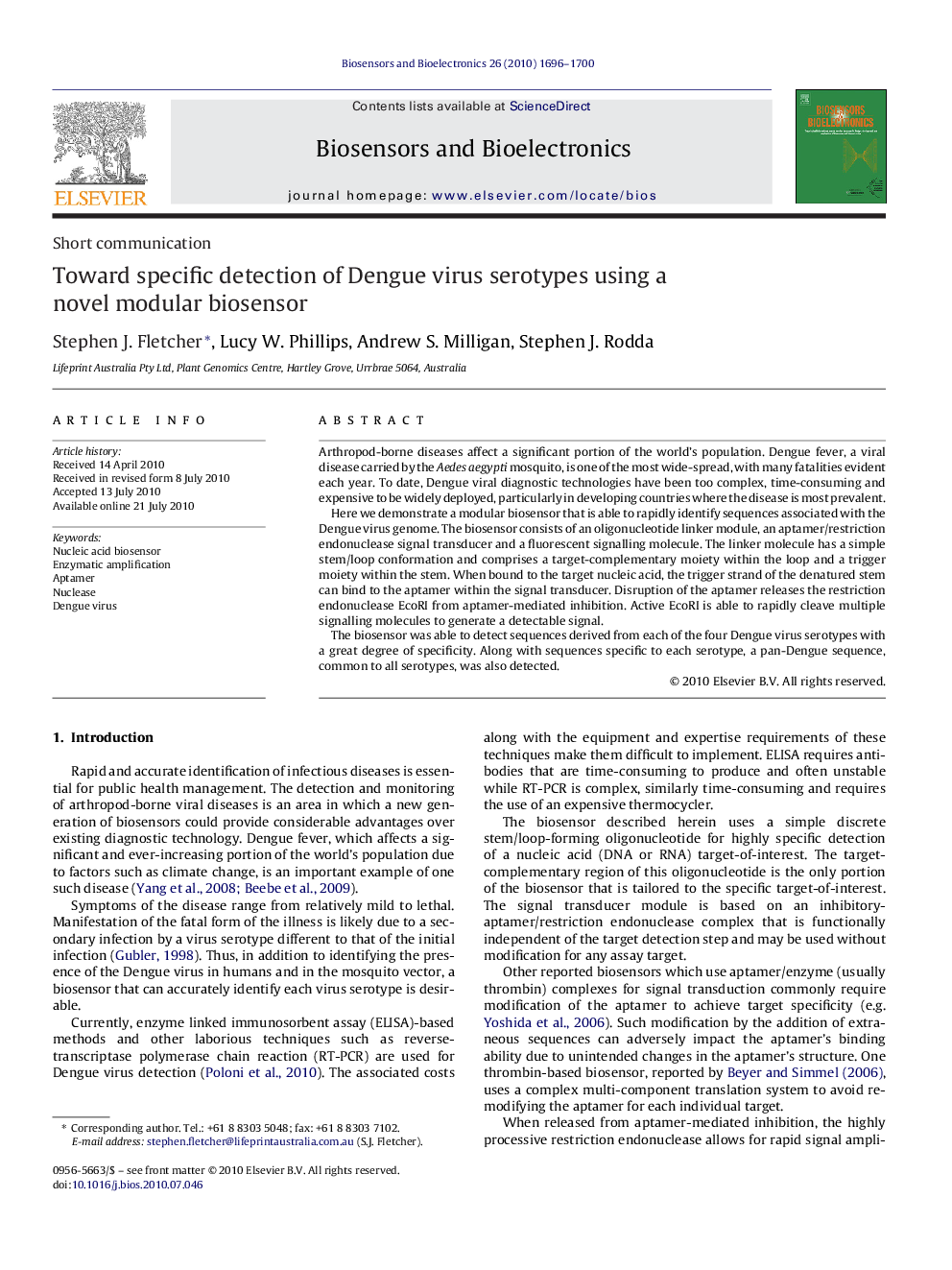| Article ID | Journal | Published Year | Pages | File Type |
|---|---|---|---|---|
| 868469 | Biosensors and Bioelectronics | 2010 | 5 Pages |
Arthropod-borne diseases affect a significant portion of the world's population. Dengue fever, a viral disease carried by the Aedes aegypti mosquito, is one of the most wide-spread, with many fatalities evident each year. To date, Dengue viral diagnostic technologies have been too complex, time-consuming and expensive to be widely deployed, particularly in developing countries where the disease is most prevalent.Here we demonstrate a modular biosensor that is able to rapidly identify sequences associated with the Dengue virus genome. The biosensor consists of an oligonucleotide linker module, an aptamer/restriction endonuclease signal transducer and a fluorescent signalling molecule. The linker molecule has a simple stem/loop conformation and comprises a target-complementary moiety within the loop and a trigger moiety within the stem. When bound to the target nucleic acid, the trigger strand of the denatured stem can bind to the aptamer within the signal transducer. Disruption of the aptamer releases the restriction endonuclease EcoRI from aptamer-mediated inhibition. Active EcoRI is able to rapidly cleave multiple signalling molecules to generate a detectable signal.The biosensor was able to detect sequences derived from each of the four Dengue virus serotypes with a great degree of specificity. Along with sequences specific to each serotype, a pan-Dengue sequence, common to all serotypes, was also detected.
